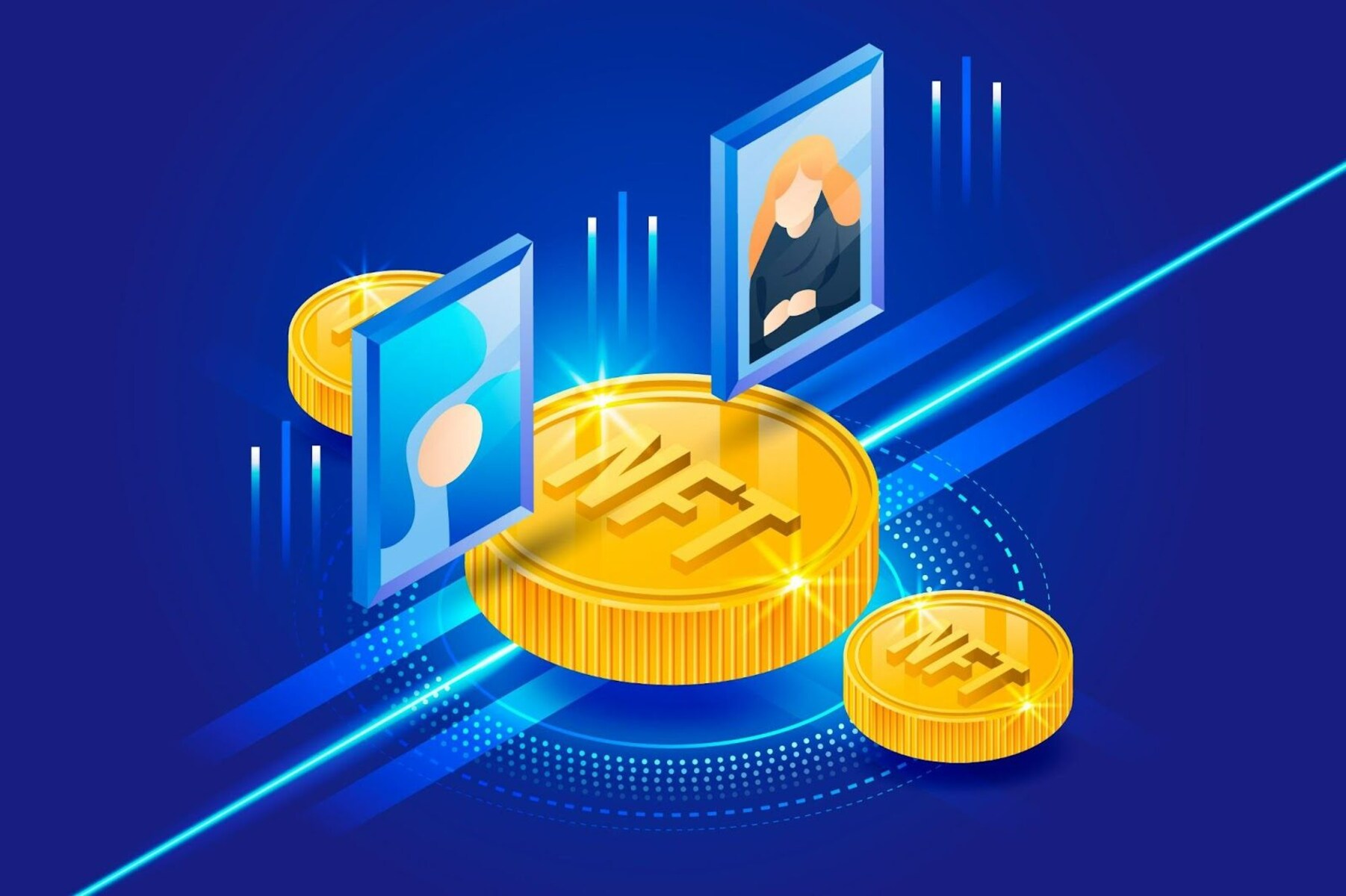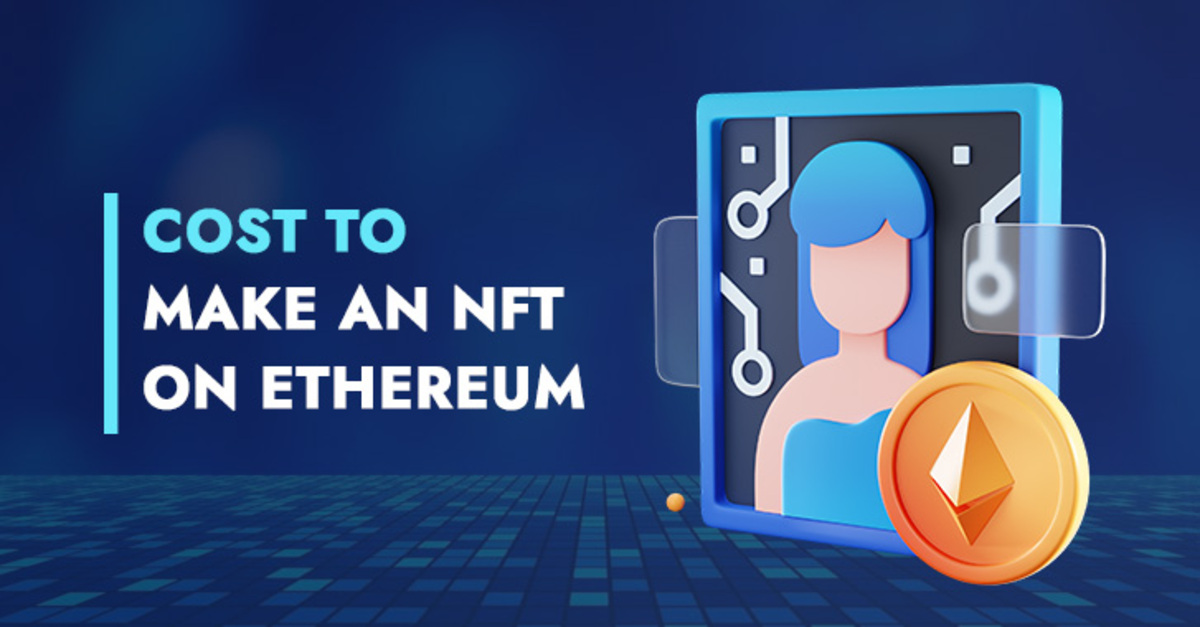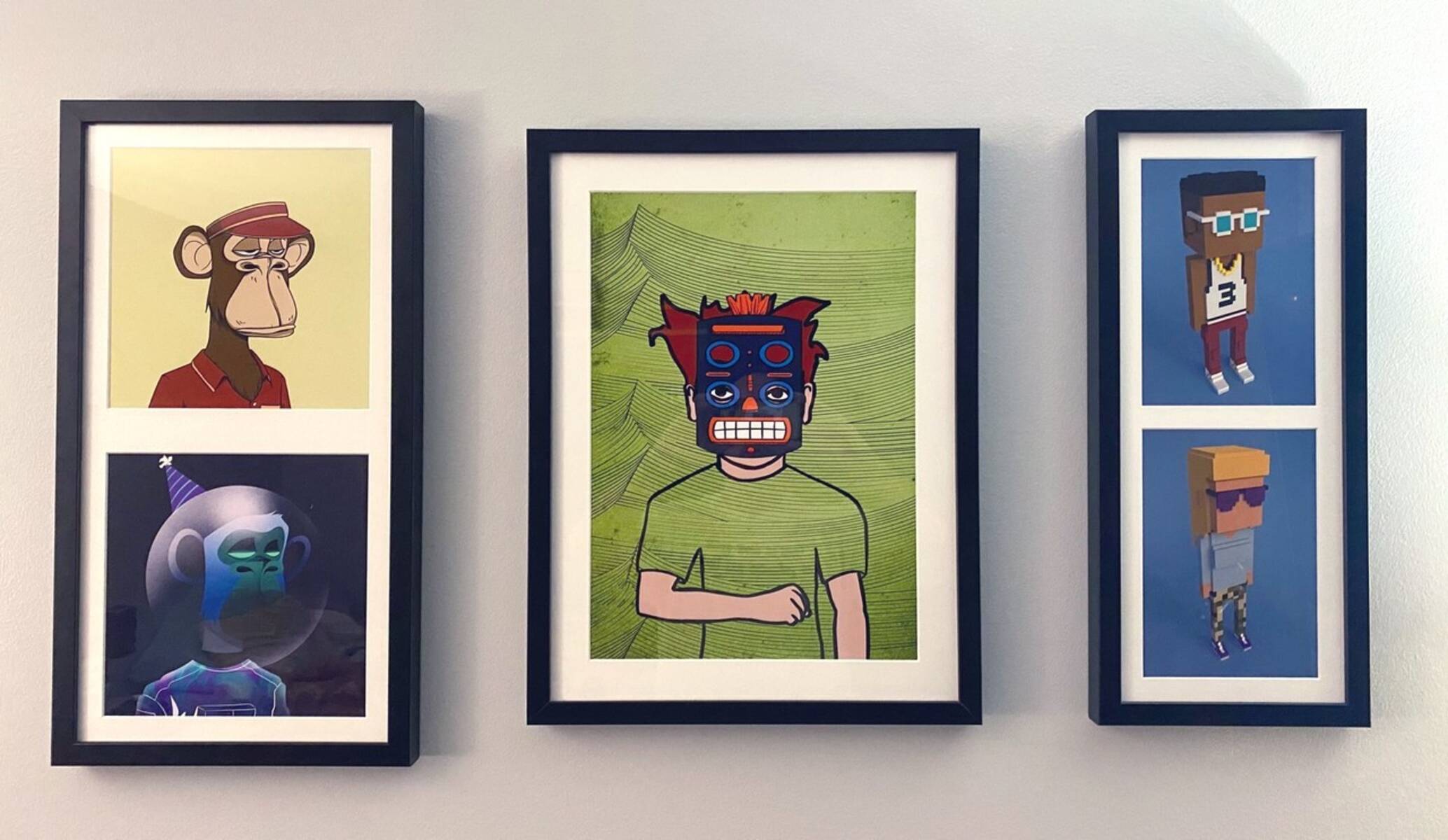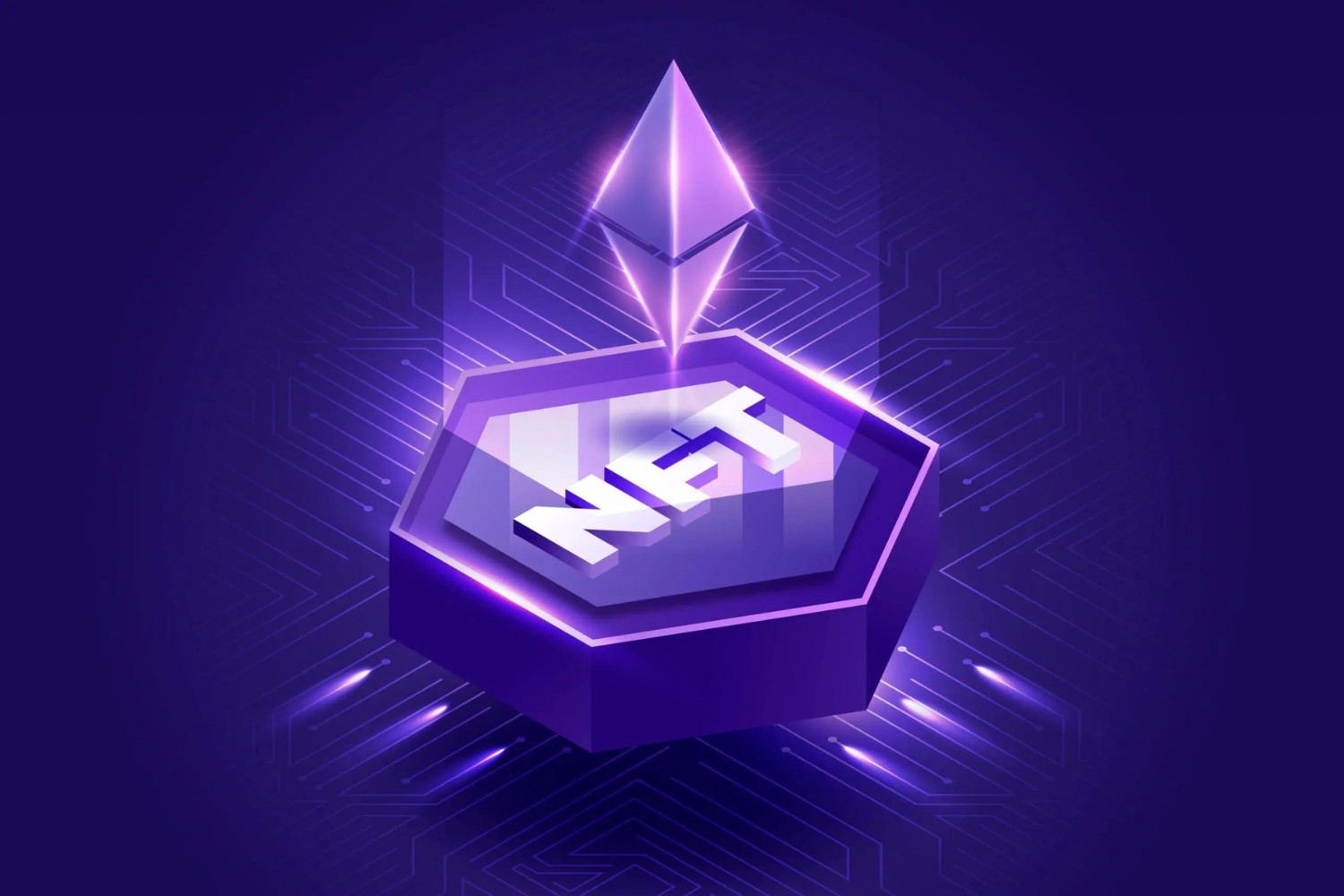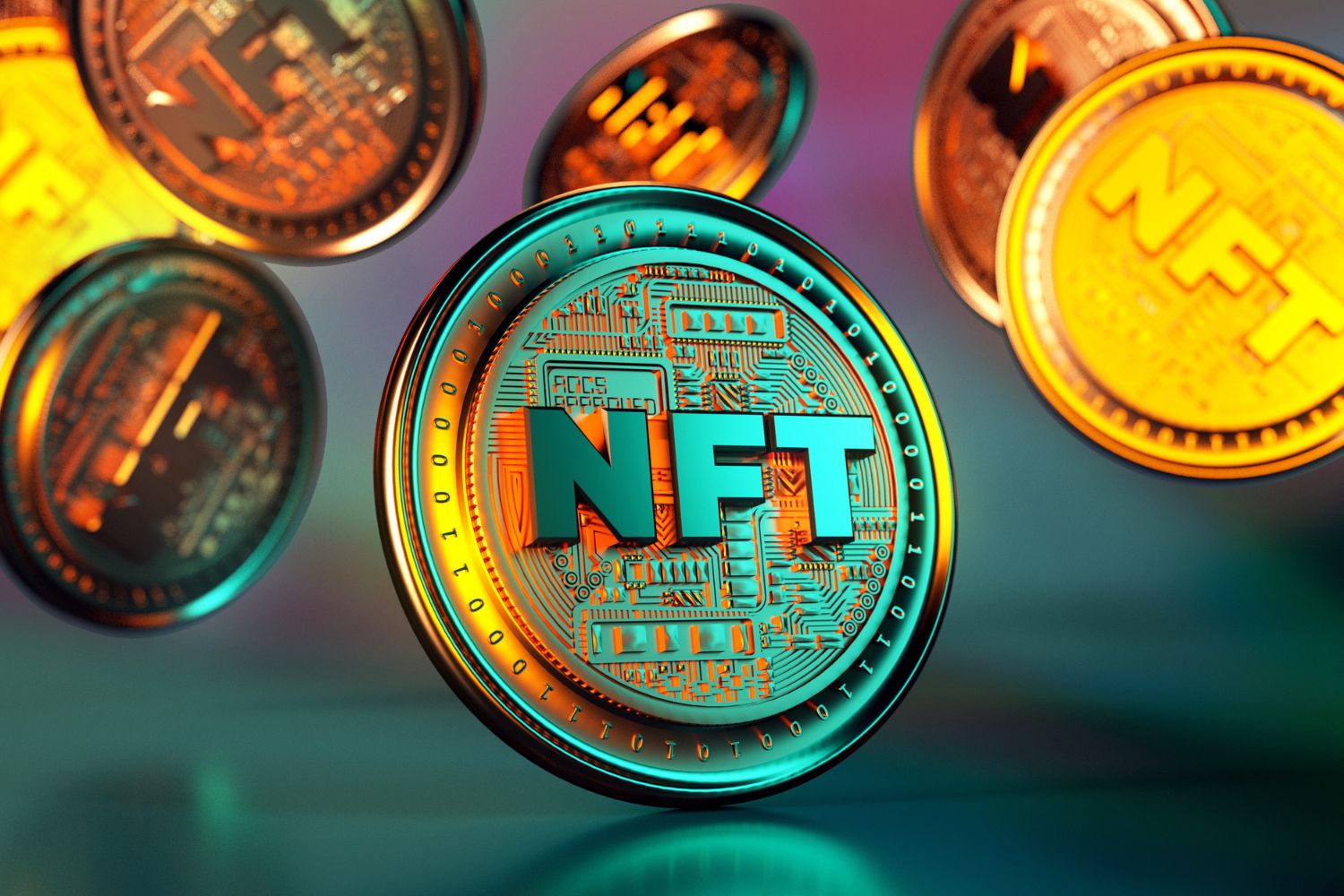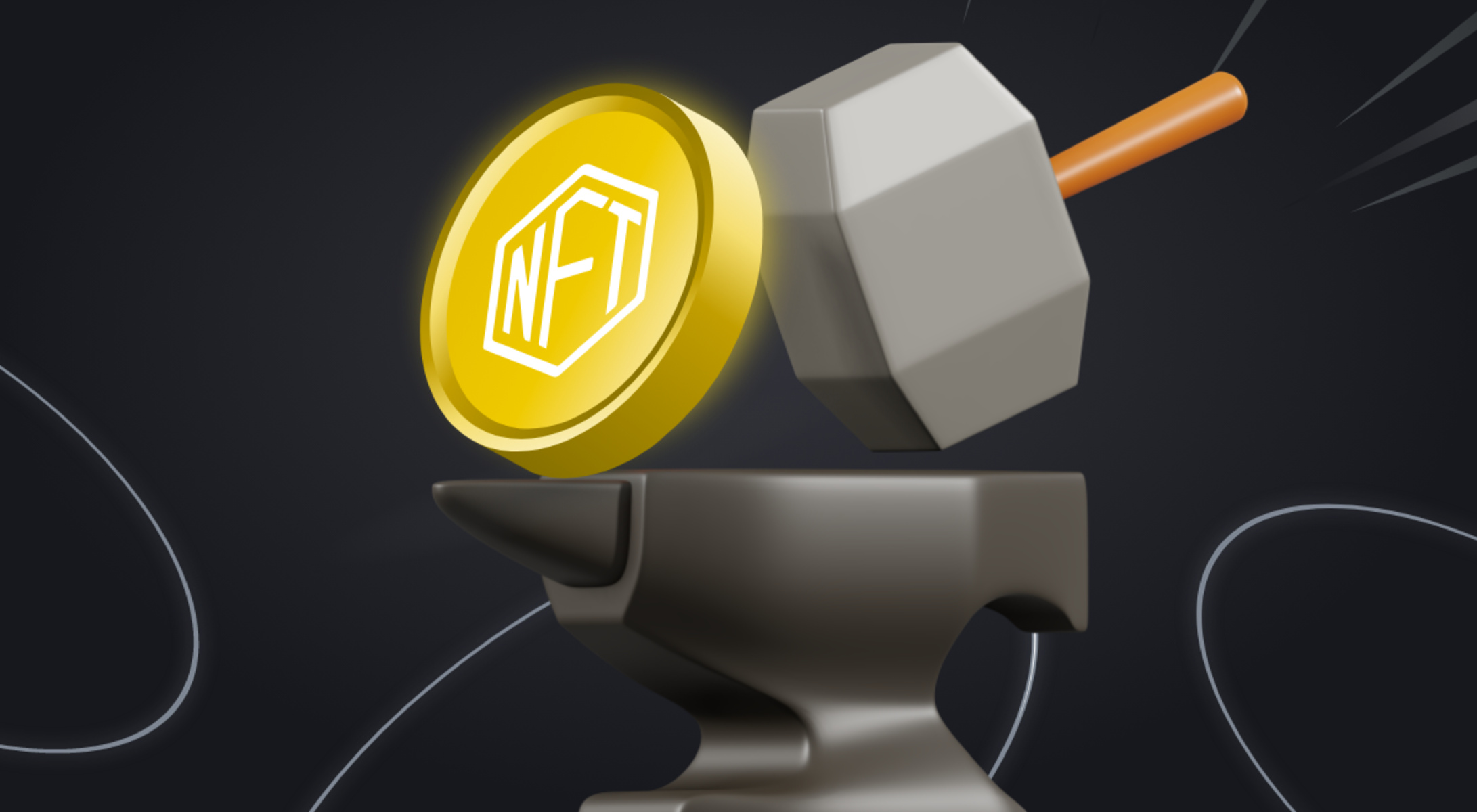Introduction
Welcome to the intriguing world of NFTs (Non-Fungible Tokens), where digital art is revolutionizing the way we perceive and own unique creations. As the popularity of NFTs continues to soar, one question lingers in the minds of many: How much does it cost to mint an NFT?
NFTs have gained immense attention in recent years as a unique form of digital ownership. Unlike traditional cryptocurrencies like Bitcoin or Ethereum, NFTs are indivisible and cannot be exchanged on a one-to-one basis. Each NFT represents a one-of-a-kind item that can be bought, sold, and owned exclusively by the buyer.
To understand the cost of minting an NFT, we need to explore what “minting” actually means in the context of NFTs. Minting refers to the process of creating a new token on a blockchain platform, which establishes a verifiable record of ownership for a specific digital asset.
There are several factors that influence the cost of minting an NFT, including wallet fees, gas fees, creation costs, platform fees, and storage fees. In this article, we will delve into each of these factors and provide a breakdown of the costs involved in minting an NFT.
By understanding the different cost components, artists and collectors can make informed decisions regarding the creation and purchase of NFTs. Additionally, we will share some tips on how to minimize minting costs and maximize the potential of your NFT investments.
So, if you’re ready to explore the world of NFTs and uncover the mysteries of minting costs, let’s dive in!
Definition of NFT
Before diving into the specifics of minting an NFT, it’s essential to understand what an NFT actually is. NFT stands for Non-Fungible Token, and it represents a unique digital asset that cannot be exchanged on a one-to-one basis like traditional cryptocurrencies.
What sets NFTs apart is their indivisible nature, meaning each token represents a single, distinct item. This could include digital artworks, music files, videos, collectibles, virtual real estate, or even virtual goods in video games. NFTs provide a means for artists, creators, and collectors to establish verifiable ownership over these digital assets.
NFTs derive their uniqueness and authenticity from blockchain technology, which serves as a decentralized and transparent ledger. This means that each NFT is associated with a specific address on a blockchain network, such as Ethereum. The blockchain records and verifies the ownership and provenance of the NFT, ensuring its authenticity and preventing counterfeiting.
One of the key benefits of NFTs is that they provide creators with a new way to monetize their digital works. Artists can sell their NFTs directly to collectors, eliminating the need for intermediaries and expanding their reach to a global audience. Additionally, NFTs typically come with smart contracts that allow creators to earn royalties from subsequent sales.
Collectors, on the other hand, gain the ability to own unique digital assets and showcase them in their virtual collections. NFT ownership can be easily verified on the blockchain, providing a sense of exclusivity and rarity to the collector.
It’s important to note that while NFTs have gained significant attention and success in recent years, they have also faced criticism regarding their impact on the environment and the potential for copyright infringement. These concerns are being actively discussed within the NFT community, and efforts are being made to address these issues.
Now that we have a clear understanding of what NFTs are and their underlying technology, let’s explore the process of minting an NFT and the associated costs.
What is Minting?
In the world of NFTs, the term “minting” refers to the process of creating a new token on a blockchain platform. Minting establishes a verifiable record of ownership for a specific digital asset and makes it available for sale or transfer.
Minting an NFT involves a series of steps that include choosing a platform, creating or uploading the digital artwork or asset, configuring sale parameters, and paying the associated fees. Let’s break down the process of minting in more detail:
- Choosing a platform: There are several blockchain platforms available for minting NFTs, with Ethereum being the most popular one. Each platform comes with its own set of features, fees, and community. Artists and collectors should carefully research and select the platform that aligns with their needs and goals.
- Creating or uploading the digital asset: The next step is to create or upload the digital artwork, music file, video, or any other digital asset that will become the NFT. This can be done using various digital creation tools or by uploading existing files in supported formats.
- Configuring sale parameters: Minters have the option to set various parameters for their NFTs, including the price, royalties, supply (whether it’s a limited edition or open edition), and any additional metadata or description. These parameters determine how the NFT can be bought, sold, and displayed.
- Paying the associated fees: Minting an NFT involves paying various fees, which we will discuss in detail later in this article. These fees usually include wallet fees, gas fees, platform fees, and potentially storage fees. The cost of these fees can vary depending on the platform and the size and complexity of the NFT.
Once the minting process is complete, the newly created NFT is recorded on the blockchain, and the minter becomes the official owner. The NFT can now be listed for sale on various NFT marketplaces or transferred to another individual.
The process of minting an NFT has provided artists and creators with an incredible opportunity to showcase and monetize their digital works. It has also opened up a new world of digital ownership and collecting for enthusiasts and collectors.
Now that we understand the concept of minting and its role in the NFT ecosystem, let’s delve into the factors that influence the cost of minting an NFT.
Factors Affecting the Cost of Minting NFTs
The cost of minting an NFT can vary based on several factors. Understanding these factors can help artists and collectors navigate the minting process and determine the overall expenses involved. Here are the key factors that influence the cost of minting NFTs:
- Wallet fees: Wallet fees refer to the charges associated with using a specific cryptocurrency wallet for minting an NFT. Different wallets may have varying fee structures, and it’s important for users to consider these fees when choosing a wallet for minting.
- Gas fees: Gas fees are an essential component of minting NFTs on blockchain platforms, particularly Ethereum. Gas fees cover the computational power and resources required to process and validate transactions on the network. These fees can fluctuate based on demand and network congestion, which can significantly impact the cost of minting.
- Artwork creation costs: Artists may incur expenses related to the creation and preparation of the digital artwork or asset that will become the NFT. These costs can include software or equipment fees, hiring graphic designers or digital artists, or purchasing licenses for digital assets.
- Platform fees: Minting NFTs on certain platforms may involve platform-specific fees. These fees can vary and may be imposed as a percentage of the sale price or as a fixed fee. Different platforms offer different services, features, and levels of visibility, and the associated costs should be taken into account when selecting a platform.
- Storage fees: Storing digital files and associated metadata on the blockchain incurs storage costs. Blockchain-based storage is typically decentralized and distributed across multiple nodes, which requires payment in the form of fees. The amount of storage needed can depend on the size and complexity of the NFT.
It’s important to note that these factors can influence the overall cost of minting an NFT, and they may vary based on the individual’s choices, preferences, and the platform used. Minting costs can range from a few dollars to hundreds or even thousands of dollars, depending on the artwork, the platform, and the demand for the NFT.
By understanding these factors, artists and collectors can better manage and plan for the expenses associated with minting NFTs. In the next section, we will break down the cost components of minting an NFT in more detail.
Cost Breakdown of Minting an NFT
When it comes to minting an NFT, several cost components come into play. Let’s take a closer look at each of these components to understand the breakdown of costs:
- Wallet fees: Wallet fees are associated with the cryptocurrency wallet used to mint the NFT. Different wallets may charge a transaction fee or a percentage of the transaction value. These fees vary depending on the wallet provider and can range from a few cents to a few dollars.
- Gas fees: Gas fees are a crucial part of minting an NFT on blockchain platforms like Ethereum. Gas fees cover the computational resources and network fees required to process the transaction. The cost of gas fees is determined by the network congestion, transaction complexity, and gas price at the time of minting. Gas fees can range from a few dollars to hundreds of dollars during times of high network activity.
- Artwork creation costs: The cost of creating the artwork or digital asset that will become the NFT can vary depending on individual preferences and requirements. It may involve expenses such as purchasing software or equipment, hiring designers, or acquiring licenses for digital assets. These costs can range from a few dollars to significant amounts, depending on the complexity of the artwork and the artist’s creative process.
- Platform fees: Minting an NFT on certain platforms may come with platform-specific fees. These fees can be imposed as a percentage of the sale price or as a fixed fee. Artists should consider platform fees when selecting a marketplace for their NFTs. Platform fees can vary widely, ranging from around 2.5% to 15% or more of the sale price.
- Storage fees: Storing the digital files and associated metadata of an NFT on the blockchain incurs storage costs. These costs vary depending on the blockchain platform and the amount of data being stored. Storage fees are typically paid in the form of the underlying cryptocurrency and can amount to a few cents to a few dollars.
It’s important to note that the specific costs within each category can vary based on factors like the artist’s preferences, the chosen platform, the artwork’s complexity, and the current market conditions. Artists and collectors should consider these costs when budgeting for minting an NFT. Additionally, it is worth noting that some platforms may combine certain fees, such as gas fees and platform fees, into a single transaction fee.
Now that we have explored the breakdown of costs associated with minting an NFT, let’s move on to understanding specific fees in more detail, starting with wallet fees.
Wallet Fees
Wallet fees are an essential consideration when minting an NFT. A wallet is a digital application or device that allows users to securely store, manage, and transact with their cryptocurrencies. Many wallets provide built-in support for minting NFTs, offering a seamless experience for artists and collectors.
Wallet providers may charge fees for various actions related to NFT minting, such as creating a new token, transferring the NFT to another address, or placing the NFT for sale on a marketplace. These fees help cover the operational costs of maintaining the wallet infrastructure and improving user experience.
The specific wallet fees can vary among providers and depend on factors such as the popularity of the wallet, the underlying blockchain network, and the features offered. Here are a few key things to consider about wallet fees:
- Transaction fees: Wallets typically charge a fee for each transaction performed on the blockchain network. This fee is paid in the form of the blockchain’s native cryptocurrency and is necessary to incentivize miners or validators who process and validate the transaction. The transaction fee is often dynamic, adjusting based on the network’s congestion and the priority of the transaction.
- Percentage fees: Some wallet providers charge a percentage fee based on the value of the NFT transaction. This fee is calculated as a percentage of the transfer or sale price of the NFT. The percentage fee can vary among wallets and is usually deducted automatically when the transaction is executed.
- Subscription fees: Certain wallets may offer premium features or enhanced services for a subscription fee. These subscriptions might provide additional benefits such as priority transaction processing, advanced security features, or access to exclusive NFT marketplaces. Artists or collectors who require these extra features may opt for a subscription-based wallet.
- Wallet selection: It’s important to research and compare wallet options to find the one that fits your needs and budget. Consider factors like the reputation of the wallet provider, user reviews, security features, compatibility with the desired blockchain network, and the transparency of the fee structure.
Wallet fees are a necessary aspect of minting an NFT, as they help sustain the infrastructure and services provided by wallet providers. It’s crucial for artists and collectors to factor in these fees when budgeting for the overall cost of minting an NFT.
Next, let’s explore another significant component of the cost breakdown: gas fees.
Gas Fees
Gas fees are a fundamental aspect of minting NFTs on blockchain platforms, particularly Ethereum. Gas fees cover the computational power and resources required to process and validate transactions on the network. As NFT transactions involve creating and updating tokens on the blockchain, gas fees play a crucial role in determining the cost of minting.
Gas fees are denominated in a fraction of the underlying cryptocurrency, typically referred to as “gas.” Ethereum, for example, measures gas fees in units called “Gwei,” which is a fraction of Ether (ETH). Gas fees are paid by the user to compensate the miners or validators for the work they do in processing the transaction and securing the network.
The cost of gas fees can vary widely based on several factors:
- Network congestion: During periods of high demand, the Ethereum network can become congested, resulting in an increase in gas fees. When the network is overloaded with transactions, users have to pay higher fees to ensure that their transactions get included in the next block. Gas fees can spike significantly during such periods.
- Transaction complexity: The computational effort required to process a transaction depends on its complexity. Minting an NFT involves several steps, including creating a new token, updating metadata, and interacting with smart contracts. The more complex the transaction, the higher the gas fee required to cover the computational resources needed.
- Gas price: Gas fees are determined by the gas price, which represents the amount of cryptocurrency (in Gwei) that a user is willing to pay per unit of gas. Users can choose their own gas price, with higher prices offering faster transaction processing. However, a higher gas price also results in increased costs.
- Gas limit: Each transaction has a gas limit, which is the maximum amount of gas that can be used for that transaction. If a transaction requires more gas than the specified limit, it will fail. Setting an appropriate gas limit is crucial to ensure that the transaction is successfully executed without wasting excess gas.
It’s worth noting that gas fees can vary greatly based on the factors mentioned above. During times of high demand and network congestion, gas fees can rise exponentially, making it more expensive to mint an NFT. Artists and collectors should carefully consider the prevailing gas fees and evaluate the most cost-effective times to mint their NFTs.
Now that we’ve explored wallet fees and gas fees, let’s move on to another important component: artwork creation costs.
Artwork Creation Costs
Artwork creation costs are a significant factor to consider when minting an NFT. These costs depend on the process of creating or producing the digital artwork or asset that will become the NFT. Artists may incur various expenses related to the creation, design, and preparation of their artwork. Here are a few key considerations regarding artwork creation costs:
- Software and equipment: Artists may need to invest in digital art creation software, graphic design tools, or specialized equipment to bring their vision to life. Some popular software options for digital art creation include Adobe Photoshop, Procreate, and Corel Painter. Depending on the desired level of sophistication and complexity, these tools can vary in cost.
- Hiring professional help: If artists don’t have the necessary skills or time to create the artwork themselves, they may choose to hire graphic designers, digital artists, or other professionals to bring their concept to reality. The cost of hiring professionals can vary based on their experience, reputation, and the complexity of the artwork. Artists should consider budgeting accordingly if they opt for this route.
- Licensing and sourcing assets: Artists may need to acquire licenses for certain digital assets, such as stock photos, textures, or illustrations, to incorporate them into their artwork. Additionally, purchasing high-quality assets or resources can contribute to the overall cost. It’s important for artists to ensure they have proper rights to use and modify any third-party assets they incorporate into their work.
- Time and effort: Artwork creation involves a significant investment of time and effort. Artists should consider the value of their time when factoring in the overall cost. The complexity and intricacy of the artwork can impact the amount of time required, which, in turn, can affect the overall cost of production.
- Editions and variants: If artists plan to offer limited editions or variants of their artwork, additional costs may be incurred. This includes creating different versions of the artwork with unique attributes or producing physical prints or merchandise associated with the NFT. Artists should account for these expenses when considering their overall minting costs.
Artwork creation costs can vary greatly depending on the artist’s preferences, skills, requirements, and resources. It’s crucial for artists to outline their budget, research potential expenses, and assess the return on investment when determining the cost of creating their NFT artwork.
Now that we have explored artwork creation costs, let’s move on to discussing another crucial aspect of the cost breakdown: platform fees.
Platform Fees
Platform fees are an important consideration when minting an NFT, as they can significantly impact the overall cost. Different NFT marketplace platforms impose fees that artists and collectors should take into account when selecting where to mint and sell their NFTs. Here’s what you need to know about platform fees:
- Sales commission: Many NFT platforms charge a sales commission or transaction fee when an NFT is sold on their marketplace. This fee is usually a percentage of the sale price and is deducted from the artist’s earnings. The commission percentage can vary widely among platforms, typically ranging from 2.5% to 15% or more.
- Listings and promotional fees: Some NFT platforms may also charge additional fees for premium listings or promotional services to increase the visibility of an artist’s NFT. Artists can choose to invest in these opportunities to gain more exposure and potentially increase their chances of making a sale. These fees can vary depending on the platform and the level of promotion desired.
- Membership or subscription fees: Certain platforms offer premium or membership-based services that come with additional fees. These services may include exclusive features, priority placement, and access to special events or communities. Artists and collectors who wish to access these premium services may need to pay a recurring or one-time subscription fee.
- Minting fees: While not strictly categorized as platform fees, some platforms charge a fee for the initial minting process itself. This fee covers the cost of storing the NFT’s metadata on the blockchain and verifying its authenticity. Minting fees can vary among platforms and may be determined by factors such as the size and complexity of the artwork being minted.
- Considerations when choosing a platform: Artists and collectors should carefully evaluate the fee structure and services offered by different platforms before deciding where to mint their NFTs. The overall cost of minting an NFT can vary significantly based on the fees imposed by the platform. It’s important to weigh the fee structure against the platform’s reputation, reach, community, and level of support provided.
Platform fees should be taken into account when planning the overall cost of minting an NFT. Artists should carefully consider the impact of these fees on their earnings and decide whether the benefits offered by the platform justify the associated costs.
Next, let’s explore another cost component: storage fees.
Storage Fees
Storage fees are a consideration when minting an NFT due to the nature of blockchain technology. Storing digital files and associated metadata on the blockchain incurs costs, albeit relatively minimal. Here’s what you should know about storage fees:
Blockchain-based storage is typically decentralized and distributed across multiple nodes. Each node stores a copy of the blockchain data, including NFT metadata. While storage on the blockchain is generally secure and permanent, it does come with associated costs.
Storage fees for NFTs are typically paid with the underlying cryptocurrency of the blockchain network. The fees are often calculated based on the size of the metadata associated with the NFT. NFT metadata includes information such as the artwork’s description, attributes, provenance, and other relevant details.
The cost of storage fees can typically range from a few cents to a few dollars, depending on the blockchain network and the size of the NFT metadata. However, it’s important to note that many NFT platforms and marketplaces cover these storage costs on behalf of the artists and collectors as part of their service.
Artists and collectors may also have the option to choose an alternative storage solution, such as decentralized file storage platforms like IPFS (InterPlanetary File System). IPFS allows for distributed, peer-to-peer file hosting, reducing the reliance on blockchain storage costs and potentially providing more flexibility with storage options.
When considering storage fees, it’s important to assess the long-term sustainability of the chosen blockchain platform and its associated costs. Additionally, artists should keep in mind that if they decide to move their NFTs to a different platform or marketplace, there may be associated migration or transfer fees.
Overall, while storage fees are a component of the overall cost of minting an NFT, they are relatively small compared to other factors such as gas fees or platform fees. Nonetheless, artists and collectors should be aware of these costs and factor them into their considerations when minting and managing NFTs.
Now that we have explored the key components of the cost breakdown, let’s move on to the next section and discuss some tips for minimizing minting costs.
Tips for Minimizing Minting Costs
When it comes to minting an NFT, artists and collectors can take certain steps to minimize the associated costs. By being strategic and mindful, it’s possible to optimize the minting process and reduce expenses. Here are some tips to help minimize minting costs:
- Research wallet options: Compare different cryptocurrency wallets to find one with lower transaction fees. Consider factors like wallet popularity, reliability, and user reviews. Opting for a wallet with lower fees can help save costs during the minting process.
- Choose the right time to mint: Monitor the blockchain network for periods of lower network congestion. During times of high demand on the network, gas fees tend to be higher. By choosing a less congested time, artists and collectors can potentially pay lower gas fees for their NFT transactions.
- Optimize transaction parameters: Be mindful of the gas price and gas limit when minting an NFT. Setting a reasonable gas price and ensuring an appropriate gas limit can help avoid unnecessarily high gas fees. Consider using gas fee estimation tools to determine optimal parameters for the transaction.
- Minimize artwork creation costs: Explore cost-effective options when creating the artwork for your NFT. Utilize free or affordable digital art creation software, consider outsourcing specific tasks if necessary, and be diligent in sourcing assets legally or using your own original content. Being resourceful can help reduce expenses during the artwork creation process.
- Compare platform fees: Research different NFT marketplaces and platforms to compare their fee structures. Consider the commission rates, listing fees, and promotional options. Choose a platform that offers a competitive fee model with the features and visibility that align with your goals without compromising on quality and security.
- Consider self-hosting: Instead of relying solely on third-party platforms, artists and collectors can explore the option of self-hosting NFTs. This involves setting up a website or portfolio to showcase and sell the NFTs directly. While this may require additional technical expertise, it eliminates the need for platform fees, allowing for more control over the selling process.
- Be mindful of storage costs: Understand the storage fees associated with the chosen blockchain network. Consider exploring alternative storage options like decentralization file systems to potentially reduce long-term storage costs. Additionally, continuously assess the scalability and cost implications of any storage decisions and be prepared to adapt as needed.
By implementing these tips, artists and collectors can optimize their minting process, reduce costs, and make their NFT investments more cost-effective. It’s crucial to strike a balance between minimizing costs and ensuring a high-quality experience for both the artist and the collector.
Now that we have explored strategies for minimizing minting costs, it’s time to wrap up our discussion.
Conclusion
Minting an NFT can be an exciting and creative process that allows artists and collectors to participate in the digital ownership revolution. However, it’s important to consider the various factors that can influence the cost of minting an NFT.
Wallet fees, gas fees, artwork creation costs, platform fees, and storage fees all contribute to the overall expenses associated with minting an NFT. Understanding these cost components and implementing strategies to minimize costs can help artists and collectors make informed decisions and optimize their minting experience.
By researching wallet options, choosing the right time to mint, optimizing transaction parameters, and minimizing artwork creation costs, artists can reduce their expenses while maintaining the quality of their work. Comparing platform fees and considering self-hosting options can also provide more control over costs and sales processes.
When considering storage fees, determining the long-term sustainability and cost implications of the chosen blockchain platform is important. Exploring alternative storage solutions, like decentralized file systems, can potentially offer more flexibility and cost savings over time.
Ultimately, minting an NFT involves a combination of technical considerations and creative decision-making. Artists and collectors should aim to strike a balance between cost-effectiveness and their desired level of visibility, accessibility, and quality.
As the NFT landscape continues to evolve, it’s essential to stay informed about new developments, community discussions, and emerging best practices for minting and managing NFTs. Remember that the cost of minting is just one aspect of the NFT journey, and the potential rewards and opportunities can be significant.
So, whether you’re an artist looking to showcase your unique creations or a collector seeking to own digital rarities, understanding the costs and strategies involved in minting an NFT will empower you to navigate this exciting world with confidence and success.







